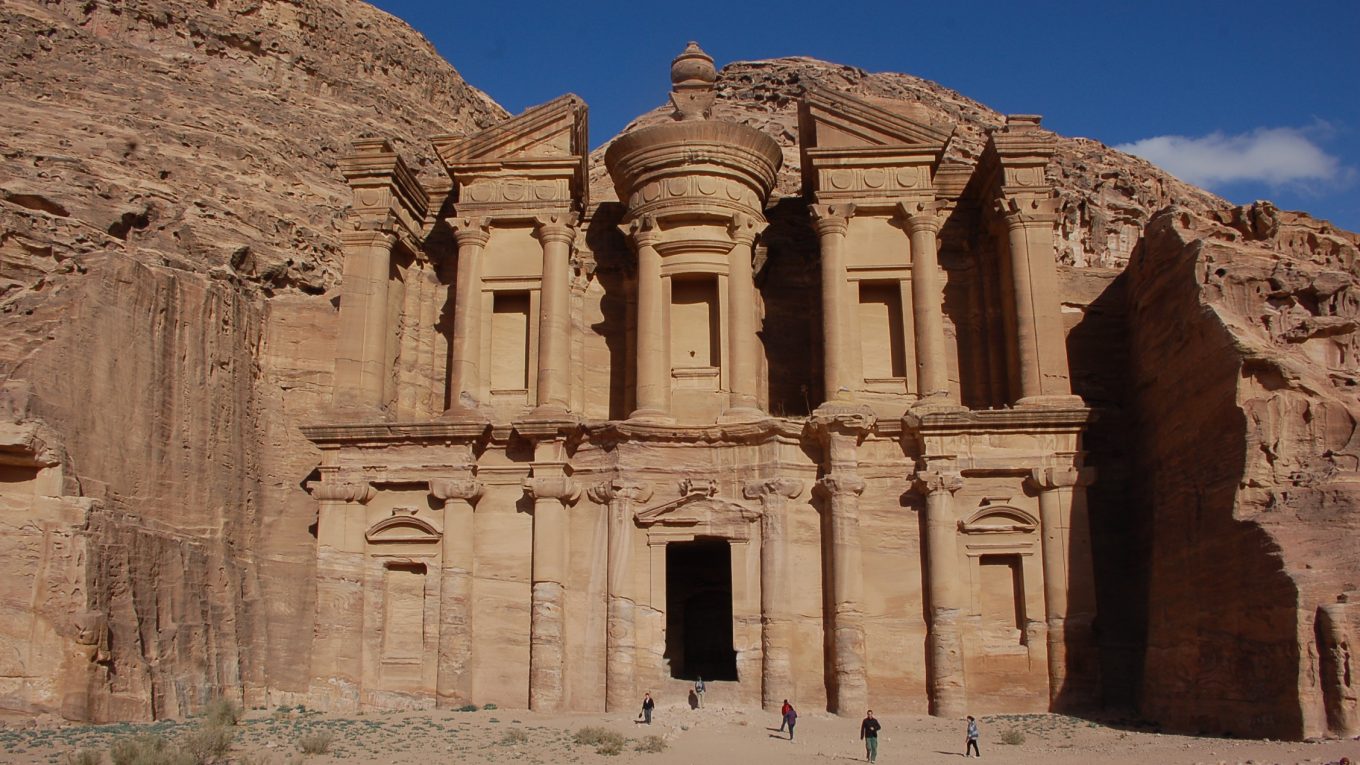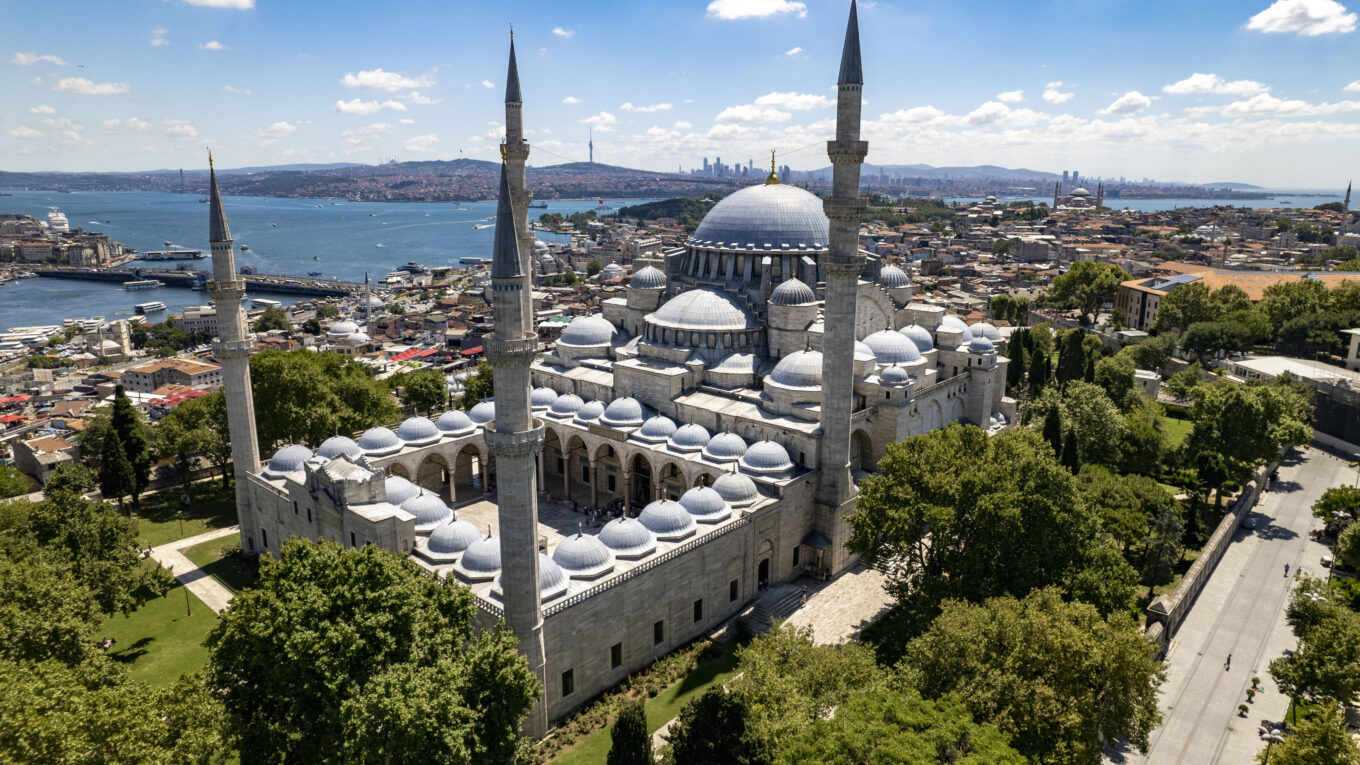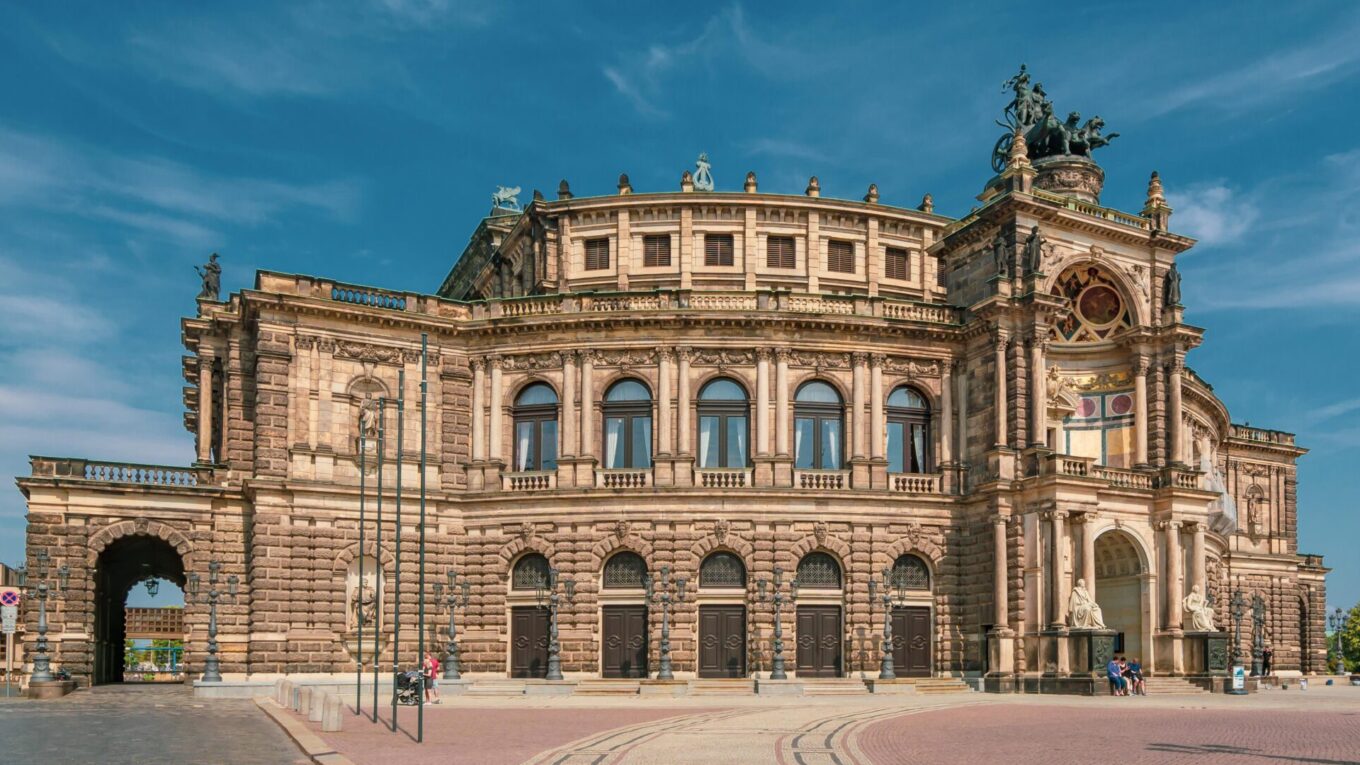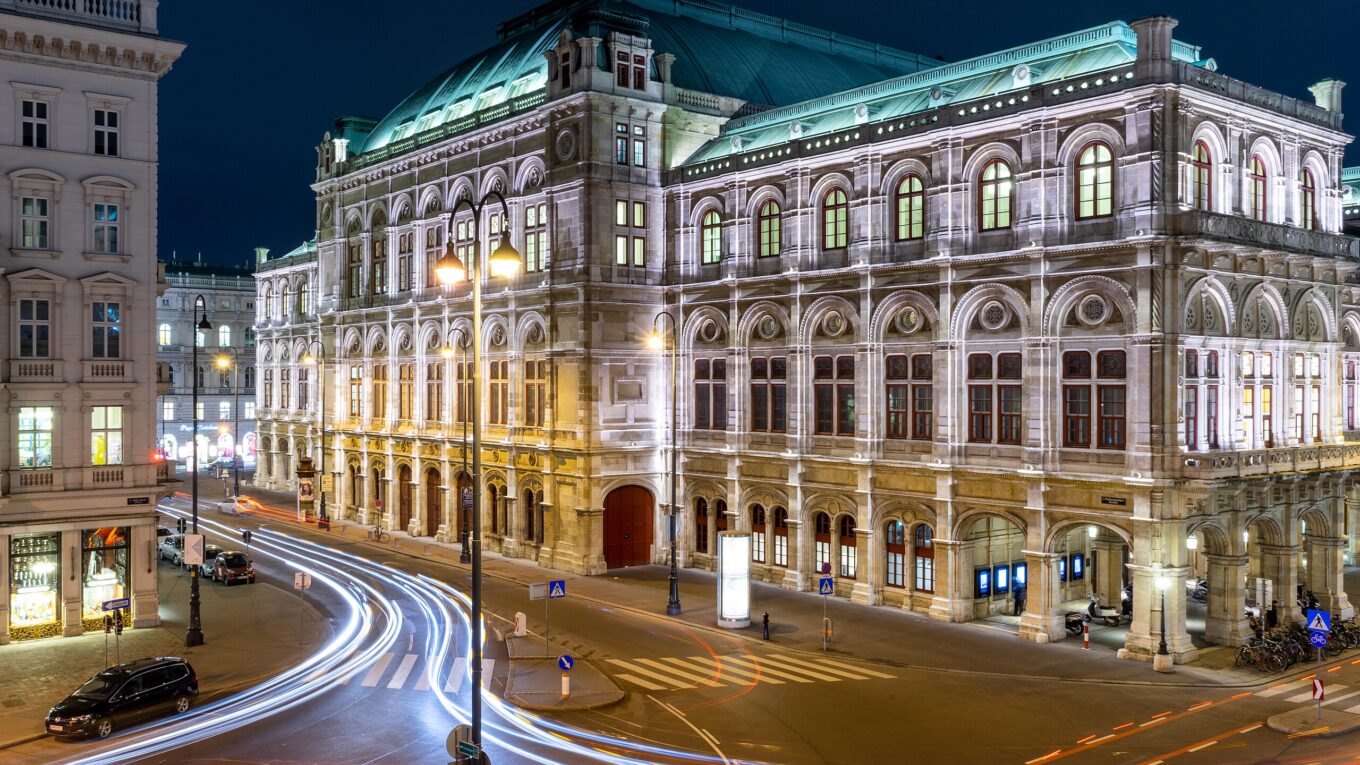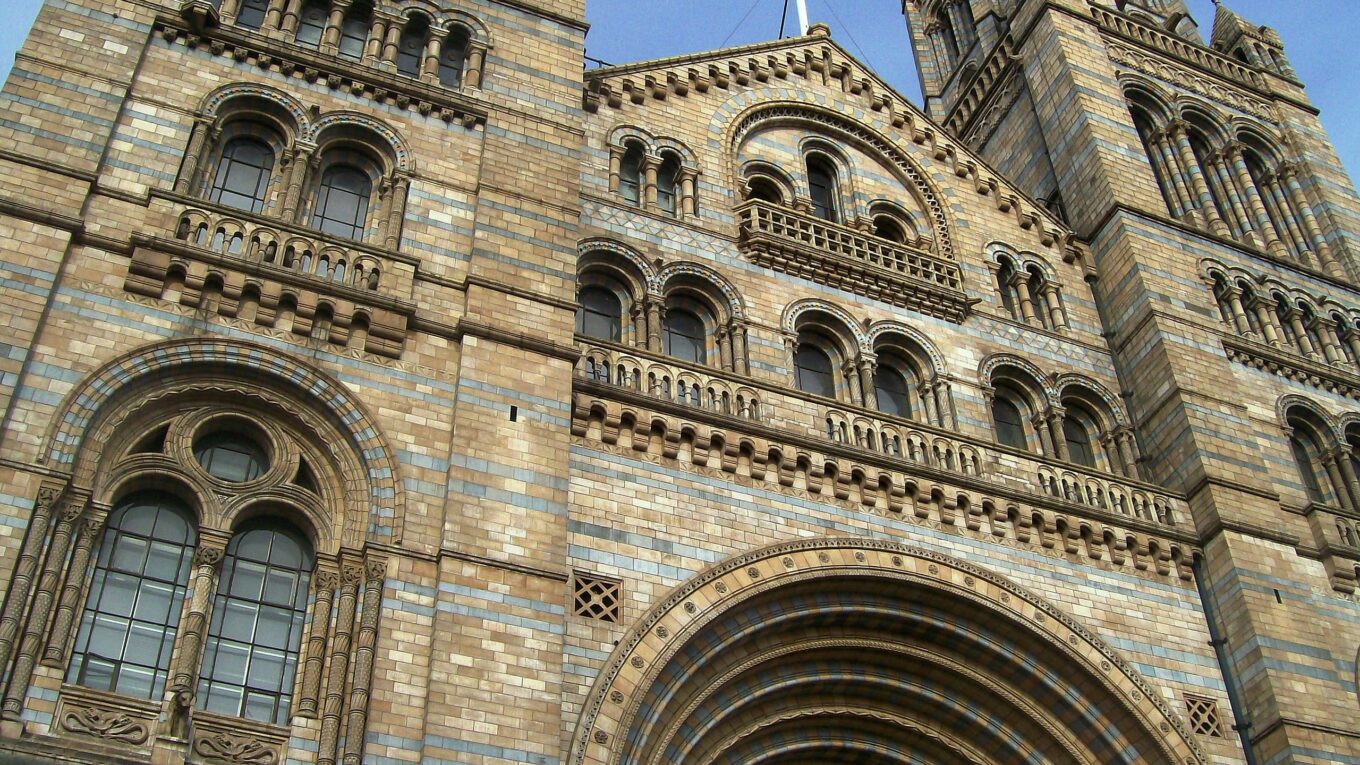16 Greatest Rock Cut Architecture Examples
Despite the diversity of buildings all over the world, the vast majority are all made from a shortlist of materials. Wood, brick, stone, metal, glass, and a handful of others make up 99% of the buildings around us. It’s rather unconventional to build something from solid rock, but despite the immense challenges, many monumental examples of rock-cut architecture exist around the world.
What’s different about Rock Cut Architecture?

Photo by Vengolis from Wikimedia Commons
Rather than being ‘built’ like regular buildings, these rock-cut buildings are the opposite; their spaces and forms were all cut from solid rock. Some of these dwellings started off as natural caves which were then elaborated on, and others are unique man-made constructions. The buildings and statues listed below are among the top examples of rock-cut architecture anywhere on Earth.
What are the best examples of Rock Cut Architecture?
1. Petra – Petra, Ma’an Governorate, Jordan

You wouldn’t expect to find some of the finest rock cut architecture on earth hidden deep within an arid wasteland, and yet there stands the city of Petra in modern-day Jordan. Petra was built by a civilization known as the Nabataeans, and the city went through a golden age in the 1st century CE. This UNESCO World Heritage Site is known for the elaborate stonework found throughout. The builders who cut the façade for the Al-Khazneh had to start from the top of the structure and work their way down, creating stairs as they went.
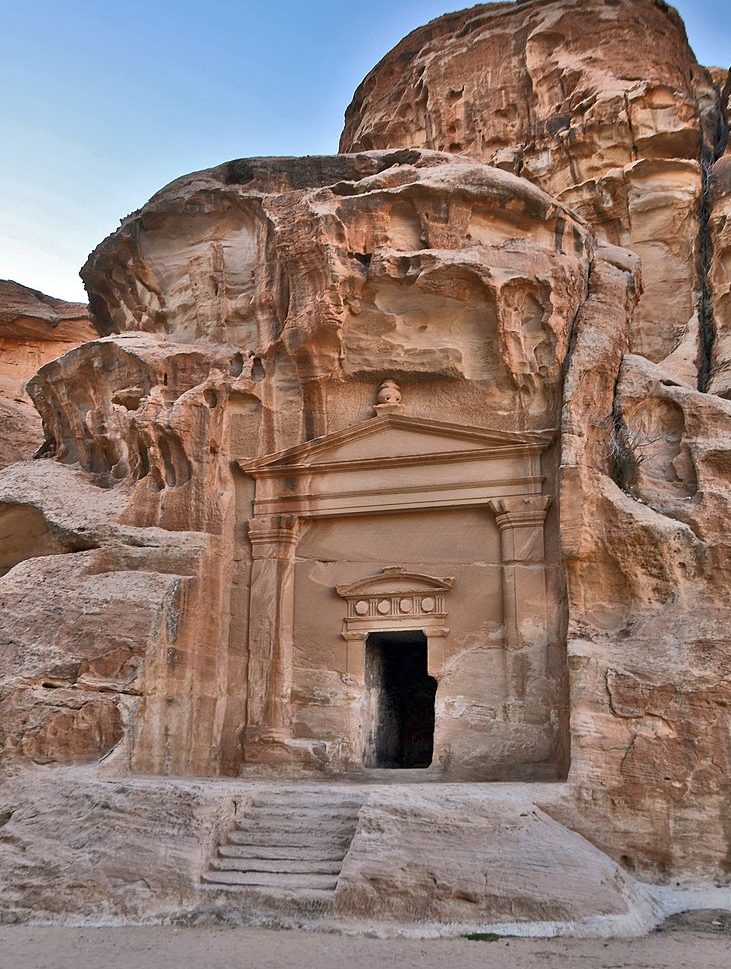
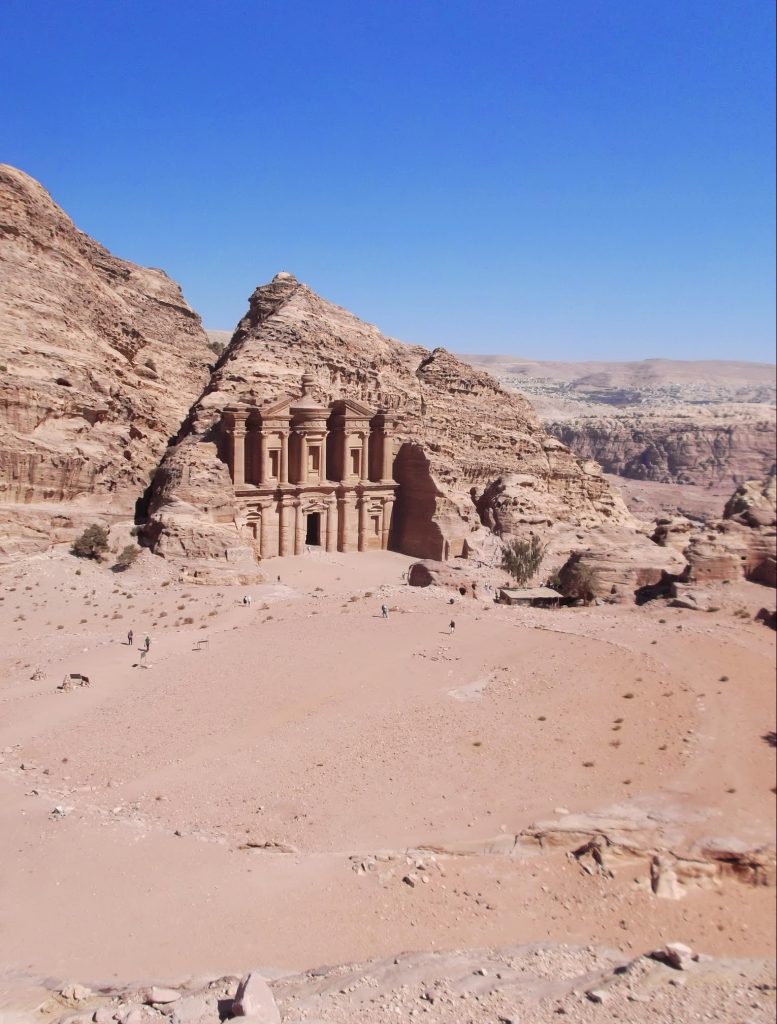
(right) A view of Ad Deir – Photo by hikinginjordan from Wikimedia Commons
In another part of the city, a similar façade of the Ad-Deir was built. All of this construction was possible because the Nabataeans took advantage of several trade routes and grew wealthy through commerce. In addition to being great architects and masons, the Nabataeans were impressive civil engineers. They created an irrigation system paired with a series of water storage areas and turned what was a desert into a fertile oasis.
2. Kailasa Temple and the Ellora Caves – Ellora, Maharashtra, India
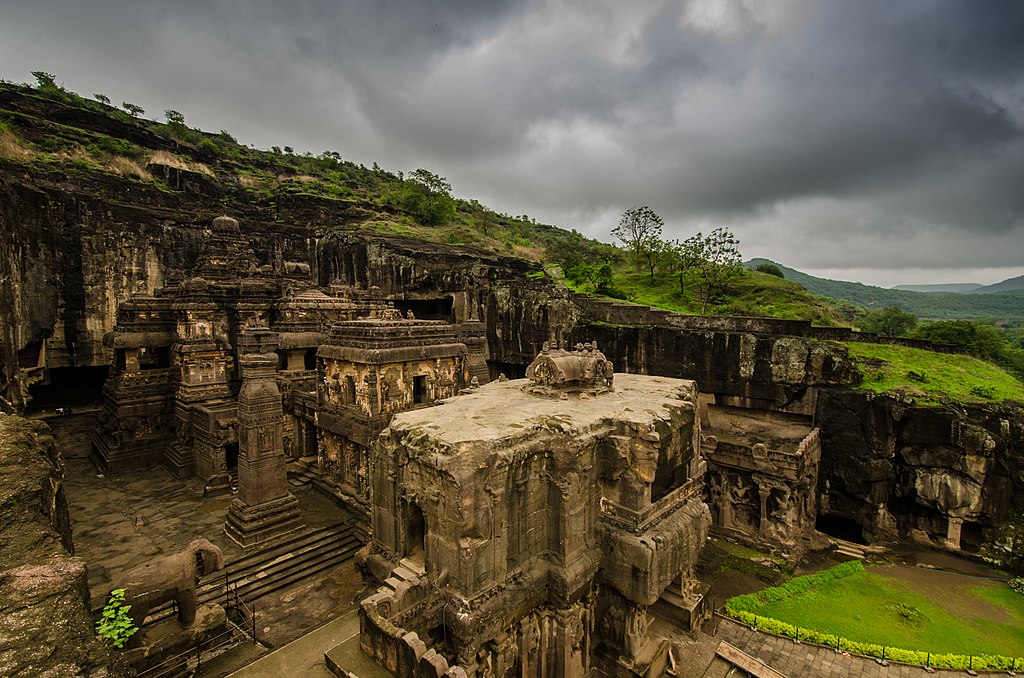
Rock-cut architecture is an important building style for many religious temples in India. One of the finest examples of these is the Kailasa Temple. Located within a much larger complex known as the Ellora Caves, the Kailasa Temple is believed to date from the 8th century CE. The builders took advantage of the rocky sloped hillside to create a temple that appears to rise out of the surrounding landscape.

The Kailasa Temple contains fantastic sculptural elements such as elaborately carved statues and stone panels. The temple contains massive interior spaces completely carved from the rock, as well as an elaborate exterior that required countless man-hours to carve from the basalt hillside. Inside are many symbols and statues dedicated to various Hindu Gods. The entire complex of the Ellora Caves became listed as a UNESCO World Heritage Site in 1983.
3. Churches of Lalibela – Lalibela, Amhara Region, Ethiopia
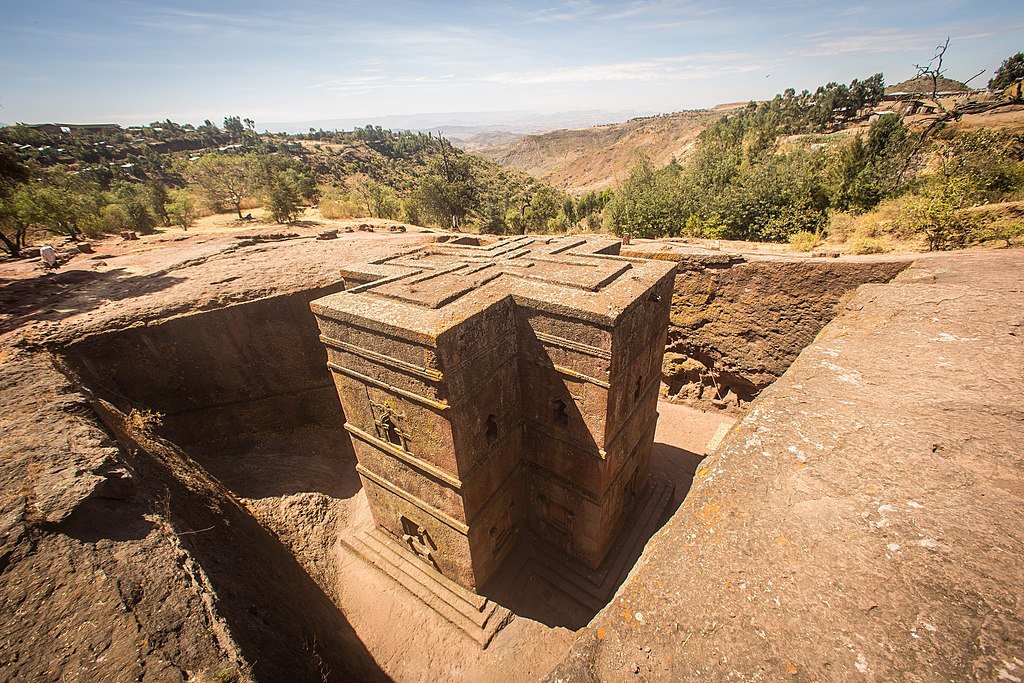
Lalibela, a town in the north of Ethiopia, is well known for its historic rock cut churches. There are 11 different churches that all date from the 12th-13th centuries, and the entire collection is listed as a UNESCO World Heritage Site. The church of Saint George, also known as Biete Ghirogis, has a large cruciform plan, carved from a hillside of solid rock.
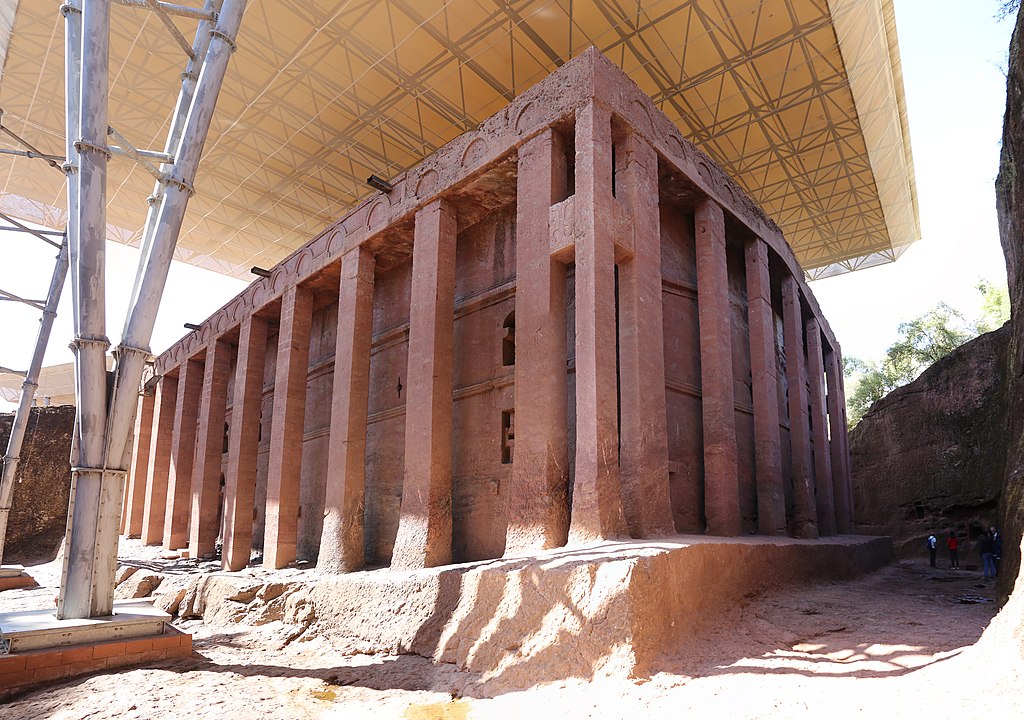
The Biete Medhani Alem is thought to be the largest rock cut monolithic church on earth. The main façade has an outer colonnade with a separate wall behind, which made its construction very challenging. Today thanks to its 11 rock-cut churches, Lalibela is one of the most visited pilgrimage sites in all of Ethiopia. The increase in popularity has also helped generate funding for restoration projects, like the modern-day canopy built over the Biete Medhani Alem.
4. Abu Simbel Temples – Abu Simbel, Aswan Governorate, Egypt
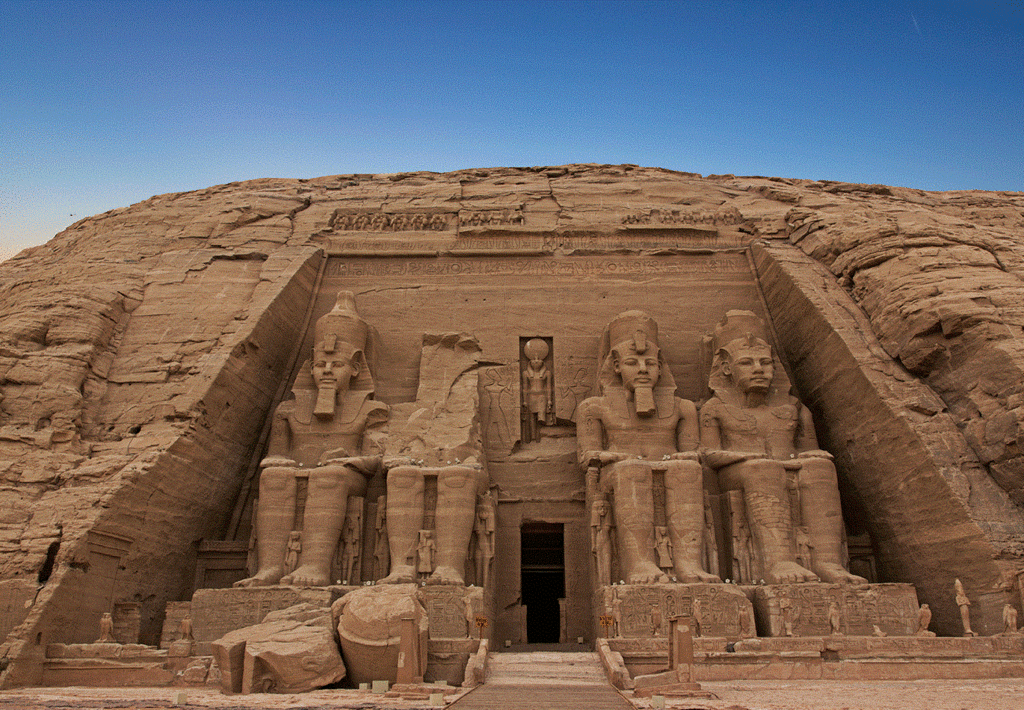
Ramesses II, also known as Ramesses the Great, was one of the most powerful rulers in the entire history of Egypt. His 66-year reign is regarded as a high point in Egyptian history, and some of the greatest Egyptian monuments date from this time. The rock cut architecture of Abu Simbel illustrates how powerful Ramesses II really was. The four statues at the entrance to the temple are 66 feet (20 m) in height and were strategically positioned overlooking the Nile River. Their location ensured that anyone traveling on the river would know they were entering the lands of the great Ramesses.
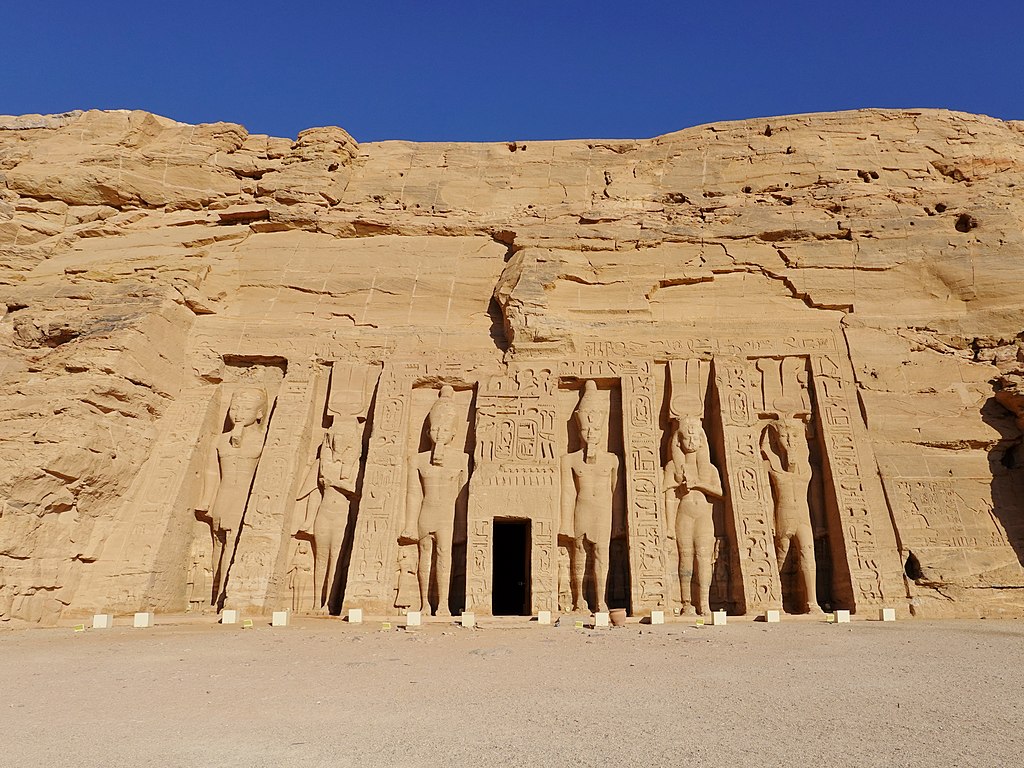
Directly adjacent to the main temple is a separate temple that was dedicated to Ramses’ wife, Nefertiti. Nefertiti was one of Egypt’s greatest queens. She is known to be one of the most powerful and influential women in Egyptian History, and her temple at Abu Simbel is a testament to her legacy.
5. Hegra – Medina Province, Hejaz, Saudi Arabia

Located in the arid deserts of modern-day Saudi Arabia, Hegra is another settlement founded by the Nabataeans, the same civilization that built the rock-cut monuments of Petra. Hegra, also known as Mada’in Salih, is not as well-known as Petra but is still an amazing example of rock-cut architecture. Just like in many other examples on this list, the most extravagant monuments at Hegra are the tombs of former rulers.

The city prospered during the 1st century CE, when it was the second-largest city in the Nabataean Kingdom, after Petra. The city served as an important stopping point on the trade route that connected the Arabian Peninsula with Egypt, the Levant, and the Mediterranean Sea. Incredible wealth was brought to the city through the trade of precious metals, spices, and rare aromatic resins such as frankincense and myrrh.
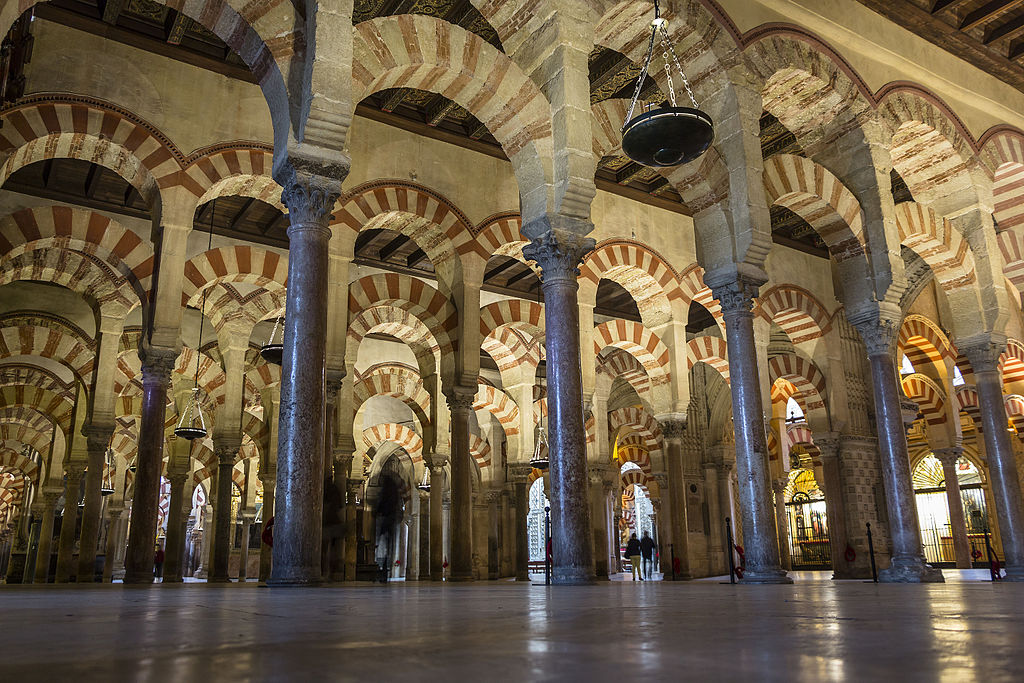
Interested in Islamic Architecture? Check out our article on the Moorish Architecture of Spain to learn more!
6. Ajanta Caves – Aurangabad, Maharashtra, India
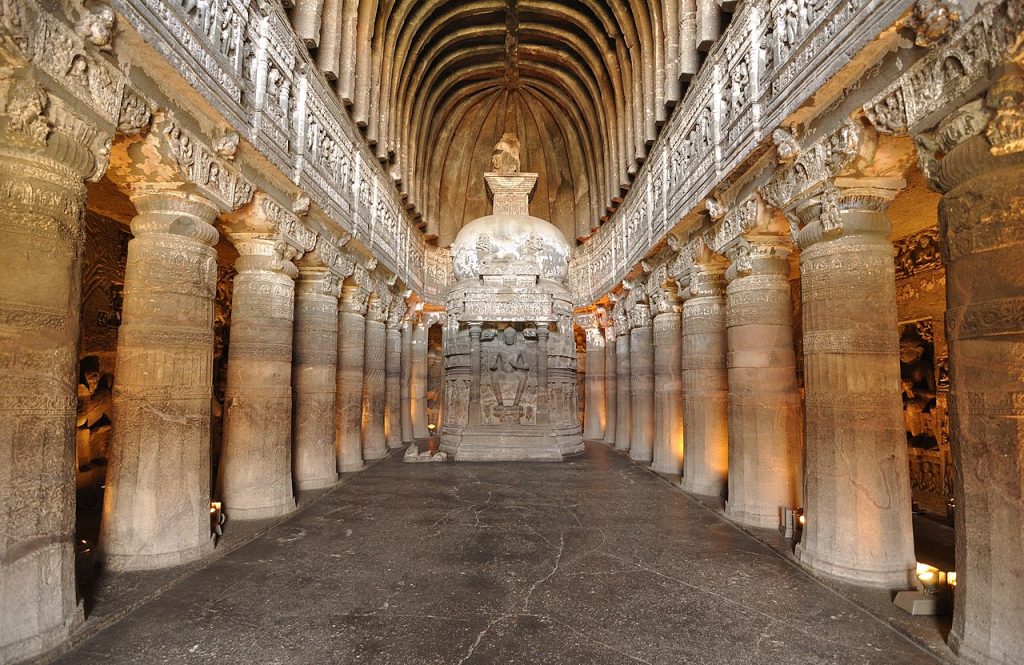
The Ajanta Caves, located just a few hours away from the Ellora Caves, are another example of the unique rock cut architectural style popular on the Indian Subcontinent. There are 30 different monuments at the site, with various interior chambers carved completely from solid stone. The cave known as Cave 26 contains one of the most notable chambers; here, a large interior aisle is flanked by a colonnade, and at the center is a traditional Buddhist Stupa.
7. Lycian Tombs – Muğla, Aegean Region, Turkey
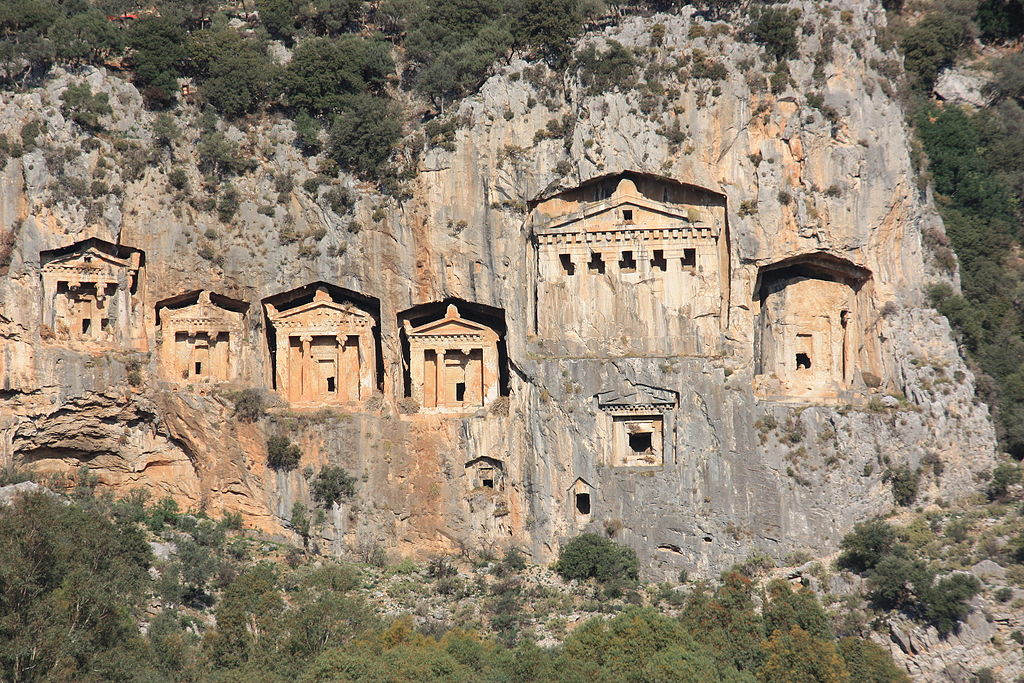
Throughout the historic region of Lycia in southwestern Turkey, there are various rock cut structures from about 450-300 BCE. The largest concentration of these rock cut tombs is located near the modern town of Dalyan. The five tombs here are all cut out of a nearly vertical cliff face. They feature several typical elements from Lycian Architecture which was influenced by the buildings of nearby Greece.
8. Longmen Grottoes – Luoyang, Henan, China
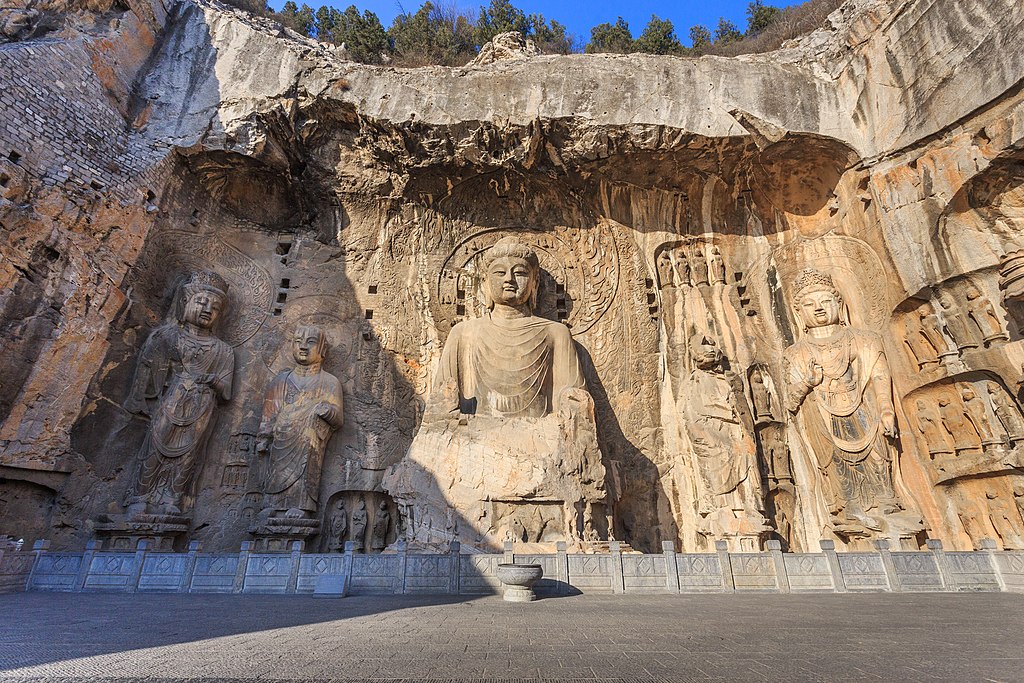
One of the finest examples of Chinese Buddhist architecture and sculpture anywhere, the Longmen Grottoes are located just south of the city of Luoyang. Tens of thousands of rock cut statues and shrines are located within the UNESCO-listed site. Over hundreds of years starting in the 5th century, the Grottoes took shape, although over time erosion and looting have caused damage to the overall collection of icons.
Like Architecture of Cities? Sign up for our mailing list to get updates on our latest articles and other information related to Architectural History.
9. Naqsh-e Rostam – Marvdasht, Fars Province, Iran

Naqsh-e Rostam is a burial site located near the ancient city of Persepolis, the capital of the once-mighty Persian Empire. Dating to the Achaemenid Dynasty from 500-300 BCE, Naqsh-e Rostam functioned as a necropolis, where high-ranking officials in the empire were laid to rest. Together with various other rock carvings nearby, these tombs illustrate the power of the Persian Empire in this time period.
10. Varaha Cave Temple – Mamallapuram, Tamil Nadu, India

Located in South India, the Varaha Cave Temple is an outstanding example of architecture from the Pallava Dynasty. The entrance to the cave is decorated with four distinct columns that show a seated lion at the base with a unique decorative capital at the top. Dating to the late 7th century CE, the Varaha Cave Temple is remarkably well preserved for its age, thanks in large part to its isolated location.
11. Monumental Rock Cut Tombs of Jerusalem – Jerusalem, Israel
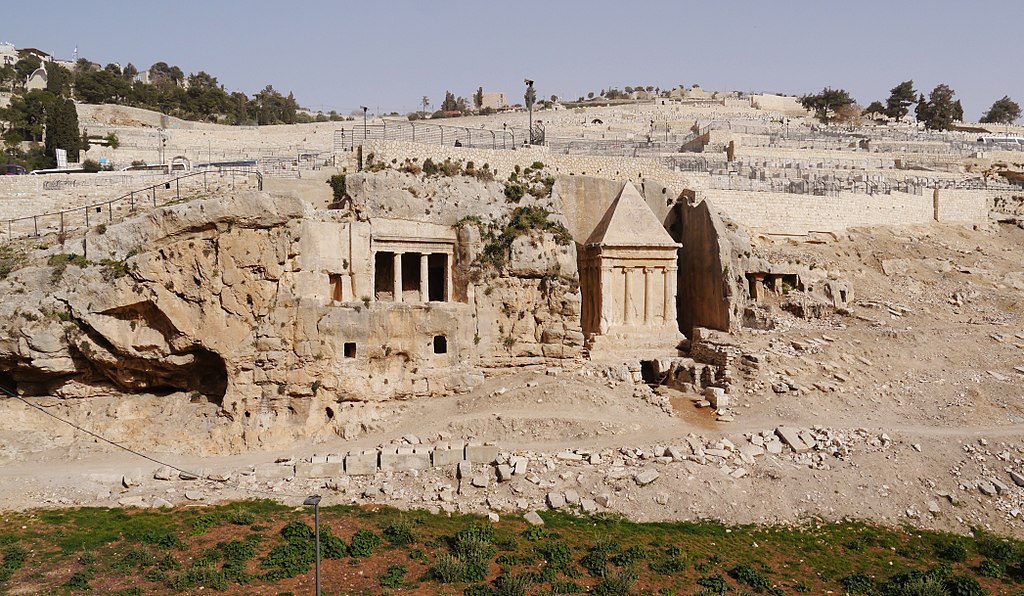
Located in the Kidron Valley, an important region of the ancient city of Jerusalem, there are many graves dating from different periods of the city’s history. Four of the most extravagant graves were all carved directly from the natural rock of the valley. Although no one is certain, many historians date the tombs from the 2nd century BCE to the 1st century CE. Two of the tombs, the Tomb of Zechariah and the Tomb of Absalom, are monolithic monuments that contain an interior chamber for the dead, while the Tomb of Benei Hezir forms a man-made cave fronted by decorative columns. Together, all three sites are some of the most visited in Jerusalem, and they are a great example of Jewish Architecture built in the city before the Roman Occupation.
12. Leshan Giant Buddha – Sichuan Province, China
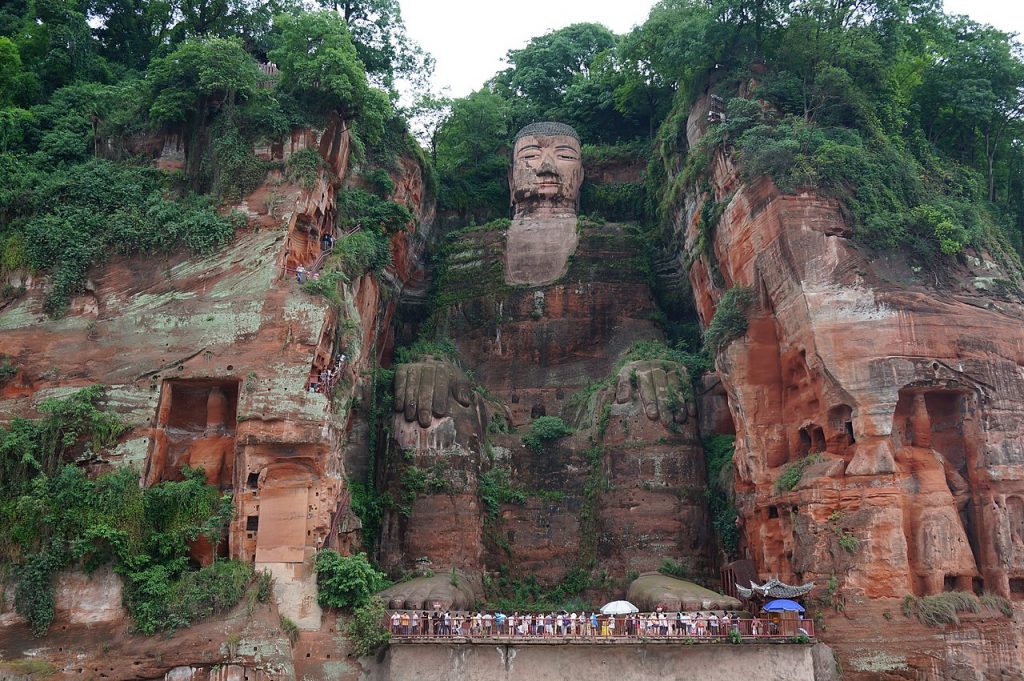
Strikingly carved from a natural red sandstone cliff face, the Leshan Giant Buddha is a colossal statue located near the city of Leshan in China. The statue dates from the Tang Dynasty and was carved in roughly 80 years. The statue is listed as a UNESCO World Heritage Site, and every year many visitors come to see the monument, some of them climbing the cliff itself to view the Buddha eye-to-eye.
13. Dazu Rock Carvings – Dazu, Chongqing, China

Although today, only about 18 percent of the Chinese population identifies as Buddhist, the country still contains some of the most striking works of Buddhist architecture in the world. The various rock carvings located in Dazu are a testament to the devotion of China’s ancient Buddhists. Throughout the various sites in Dazu, there are around 50,000 statues depicting the Buddha and other religious elements.
14. Midas Monument – Yazılıkaya, Central Anatolia, Turkey
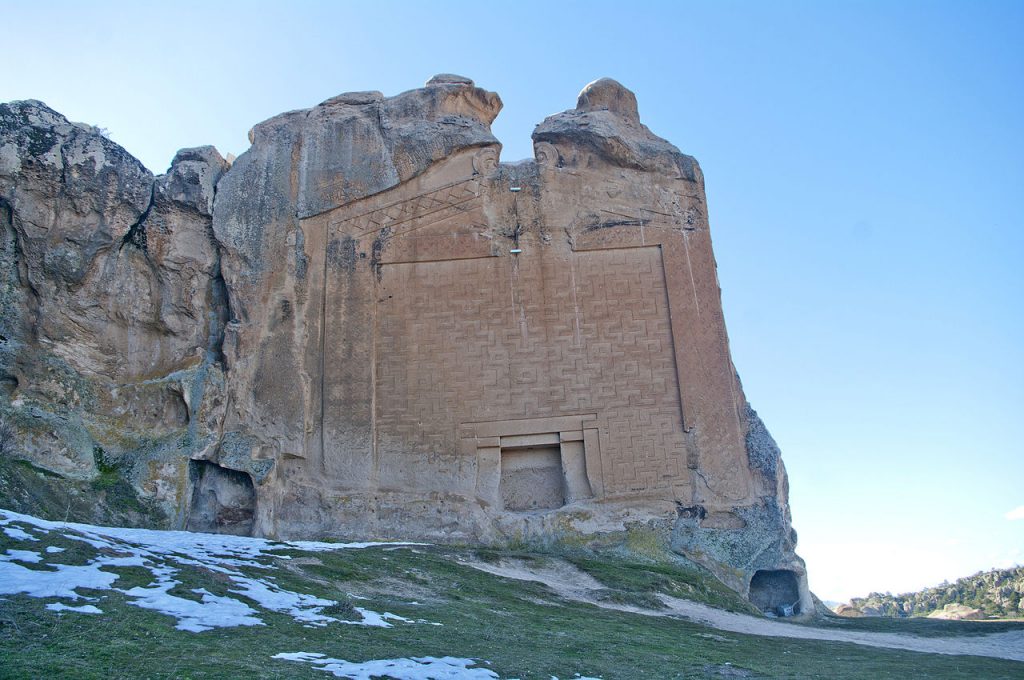
The Midas Monument was constructed by the Phrygian Kingdom, which controlled parts of Anatolia during the 7th century BCE. One of the most notable Phrygian Kings was Midas, a man so wealthy he owned enough gold objects to inspire the myth of King Midas we know today. This monolithic rock-cut tomb contains an inscription with Midas’ name, indicating he or one of his predecessors commissioned the construction.
15. Udayagiri and Khandagiri Caves – Bhubaneswar, Odisha, India
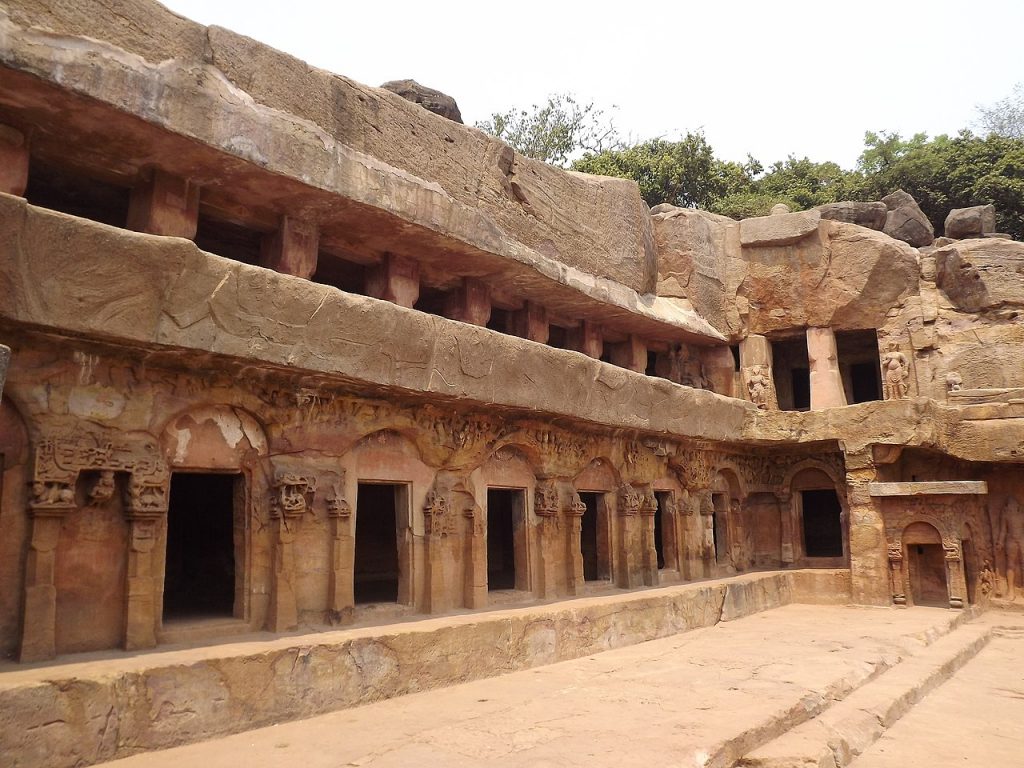
Originating as a naturally occurring system of caves, the Udayagiri and Khandagiri Cave Complex was constructed around the 1st century BCE. The caves are associated with the Jain faith, one of the oldest religions in India. The most famous of the caves is known as Rani Gumpha or the Cave of the Queen, which has two tiers of chambers fronted with columns carved directly from the rock.
16. Cappadocian Churches and Monasteries – Cappadocia Region, Central Anatolia, Turkey


(right) Gumusler Monastery in Niğde – Photo by Dosseman from Wikimedia Commons
Cappadocia is a region in Central Anatolia that is known for the striking rock formations found throughout the area. The region was home to a large Christian population during the times of the Roman Empire, and many Christians hid out within the caves and caverns that can be found in the region’s rocky landscape. Over time communities grew, and many religious structures were carved within the caves in order to help hide religious ceremonies and protect worshipers from persecution.
The Importance of Rock Cut Architecture
All of the examples of Rock Cut Architecture on this list are extremely diverse. The builders of these monuments each had different cultures and religions, they lived on different continents, and they built their architecture in many different ages. But the one thing they all have in common is a different construction method that sets them apart from mankind’s more conventional buildings.

Photo by Richard.Hargas from Wikimedia Commons
Building something from solid stone shows that the builders wanted the architecture to mean something and be significant. That’s why you will only find tombs of important individuals, monuments to rulers or deities, and religious buildings on this list. Most cultures didn’t spend the time to carve their dwellings or public buildings from stone, instead, they reserved that form of construction for their most important edifices.

- About the Author
- Rob Carney, the founder and lead writer for Architecture of Cities has been studying the history of architecture for over 15 years.
- He is an avid traveler and photographer, and he is passionate about buildings and building history.
- Rob has a B.S. and a Master’s degree in Architecture and has worked as an architect and engineer in the Boston area for 10 years.
Like Architecture of Cities? Sign up for our mailing list to get updates on our latest articles and other information related to Architectural History.

Photo by twiga-swala from Wikimedia Commons
